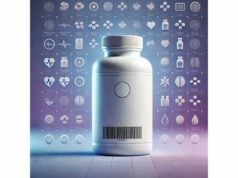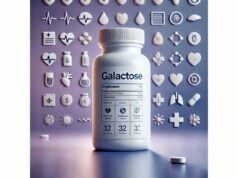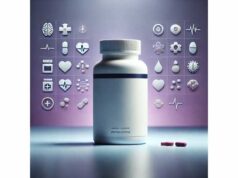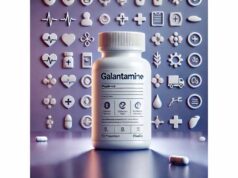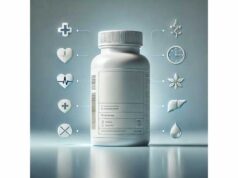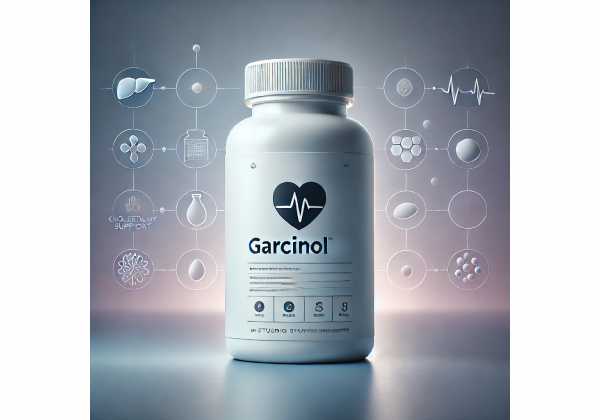
Garcinol is a naturally occurring polyisoprenylated benzophenone concentrated in the rinds of Garcinia fruits—especially Garcinia indica (kokum). It is best known in laboratories as an epigenetic modulator that can inhibit histone acetyltransferases and selectively block HDAC11, two enzyme families that help regulate inflammatory and metabolic signaling. Outside the lab, garcinol-rich extracts are marketed for metabolic and liver support, healthy inflammatory balance, and general antioxidant protection. Early clinical data—mostly using garcinol in combination formulas—suggest improvements in liver enzymes and systemic inflammation markers. Still, standalone trials are scarce, and dosing is not yet standardized. This guide translates the science into practical steps: how garcinol might work, where it may help, how to choose and use products wisely, what doses make sense today, and who should avoid it. The goal is a clear, people-first overview you can apply—ideally in partnership with your clinician.
Fast Facts
- Signals of benefit include improved liver enzymes and inflammatory markers with 100 mg/day garcinol as part of a combo; single-ingredient clinical data remain limited.
- Mechanisms include epigenetic enzyme modulation (HATs and HDAC11), antioxidant effects, and impacts on NF-κB, STAT3, and metabolic stress responses.
- Practical supplement range: 50–150 mg/day garcinol from standardized extract; products often use 20% garcinol extracts.
- Safety caveat: possible interactions with anticoagulants and drugs processed by liver enzymes; stop 1–2 weeks before surgery.
- Avoid if pregnant or breastfeeding, or if you have active liver disease or complex medication regimens unless your clinician agrees.
Table of Contents
- What is garcinol and where it comes from
- Does garcinol really work?
- Practical ways to use garcinol
- How much garcinol per day?
- Side effects, risks, and who should avoid garcinol
- What the science says: mechanisms and bioavailability
What is garcinol and where it comes from
Garcinol is a yellow, lipophilic compound found primarily in the purple rind (pericarp) of Garcinia indica—a culinary fruit known as kokum. Smaller amounts also occur in other Garcinia species. Traditional cooks use kokum rinds to add sourness and color to coastal Indian dishes and beverages; modern supplement makers isolate or enrich garcinol from these same rinds. Chemically, garcinol is a polyisoprenylated benzophenone with a β-diketone moiety and phenolic groups that confer both metal-chelating and antioxidant properties. Those chemical handles matter: in preclinical models they help garcinol interact with enzyme active sites and membrane structures, shaping downstream biological effects.
Why people are interested: garcinol sits at the crossroads of oxidative stress, inflammation, and epigenetic regulation. In cells and animals, garcinol can modulate transcription factors involved in inflammatory tone (for example NF-κB and STAT3), influence enzymes that generate pro-inflammatory mediators (like microsomal prostaglandin E synthase-1 and 5-lipoxygenase), and—most distinctively—affect epigenetic enzymes that control how genes are packaged and expressed. Those combined actions have spurred research across metabolic, hepatic, and oncologic contexts.
As an ingredient, garcinol usually appears in one of three forms:
- Standardized extracts of kokum rind, often labeled “20% garcinol,” where a 250 mg capsule supplies about 50 mg garcinol.
- Crystalline garcinol as a pure compound, used mainly in research and high-standardization products.
- Culinary kokum (whole rinds or syrups), which contribute modest polyphenols and acids but provide far less garcinol than standardized supplements per serving.
Quality varies widely. Look for identity testing of the plant (botanical, part used), transparent standardization (percentage of garcinol), and third-party verification for contaminants (heavy metals, residual solvents, microbial load). Because garcinol is lipophilic and light-sensitive, packaging and storage matter: sealed, opaque containers stored cool and dry slow degradation and rancidity.
Finally, it helps to distinguish garcinol from other well-known Garcinia constituents. Hydroxycitric acid (HCA)—the focus of Garcinia cambogia weight-loss products—is chemically and biologically different. Garcinol does not equal HCA, and findings about one should not be assumed for the other. Treat garcinol as its own ingredient with distinct mechanisms, benefits, and cautions.
Does garcinol really work?
The fairest answer is “it depends what you expect—and which product you use.” Human evidence is growing but remains limited, and most clinical data come from combination formulas where garcinol is partnered with other actives. Here is how the current landscape looks by outcome:
Liver and metabolic health.
In adults with mild to moderate nonalcoholic steatohepatitis (NASH), a randomized, double-blind, placebo-controlled trial tested a tablet taken twice daily providing garcinol 50 mg, curcuminoids 250 mg, and piperine 5 mg per dose (total daily garcinol 100 mg). Over 90 days, participants receiving the active combination saw greater reductions in ALT and AST, improved noninvasive fibrosis/steatosis scores, and decreases in inflammatory markers compared with placebo. Because garcinol was part of a three-ingredient formula, the study supports clinical plausibility for garcinol-containing regimens rather than proving garcinol alone. Still, it anchors a practical dose range and shows that garcinol can be integrated into a coherent metabolic support strategy when combined with diet and activity changes.
Inflammation and immune signaling.
Mechanistic studies using human macrophage models show that garcinol can dampen LPS-triggered inflammatory cascades, reducing cytokines tied to systemic inflammation. These controlled cell experiments align with garcinol’s effects on transcription factors and enzyme targets. While not the same as outcomes in people, they strengthen the biological rationale behind liver and joint comfort claims.
Epigenetic and oncologic research.
Two independent streams of work frame garcinol as an epigenetic modulator. First, several groups have characterized garcinol as a histone acetyltransferase (HAT) inhibitor, notably against p300/CBP and PCAF. Second, more recent work identifies garcinol as a selective HDAC11 inhibitor, an unusual activity that may explain some anti-inflammatory and metabolic effects observed in animal models. In oncology-focused preclinical studies and reviews, garcinol has shown the capacity to inhibit growth, migration, angiogenesis, and resistance pathways across gastrointestinal cancer models. These data are preclinical: they generate hypotheses and point to delivery challenges (solubility, stability) but do not justify self-treatment.
Body weight and composition.
Animal studies and early human investigations suggest appetite and adipogenesis effects, often linked to AMPK activation and endoplasmic reticulum stress relief. Rigorous, garcinol-only clinical trials in weight management are lacking; results from multi-ingredient blends cannot be generalized to pure garcinol.
Brain and bone signals.
Emerging preclinical work hints at roles in neuroinflammation and oxidative-stress related bone loss via NRF2 activation. These lines of evidence are promising but distant from clinical recommendation.
Bottom line.
If your goal is liver enzyme improvement within a metabolic program, a carefully chosen garcinol-containing formula at doses similar to published studies may help, especially as an adjunct to diet, exercise, sleep, and medical care. For broad anti-inflammatory or disease-specific claims, the science is not yet definitive. Judge products by transparency, standardization, and whether they fit within a measured plan you can actually track.
Practical ways to use garcinol
There is no single “right” way to use garcinol. Your best option depends on your goal, the product’s quality, and how you tolerate lipophilic polyphenols. Use the steps below to choose and implement an approach you can evaluate.
1) Choose the form that fits your purpose.
- Standardized capsule or tablet (most common): Look for garcinol content stated in milligrams per serving (e.g., “20% garcinol extract, 250 mg capsule = 50 mg garcinol”). If the label lists only the extract weight without percent garcinol, you cannot meaningfully compare across brands.
- Combination formula: If you prefer a blend (for example, garcinol with curcuminoids and piperine), confirm exact amounts of each active per serving and ensure the piperine dose is modest (5–10 mg/day is typical in studies). Avoid proprietary blends that hide quantities.
- Culinary kokum: Whole rinds or syrups can be part of a flavorful diet pattern, but do not assume culinary use delivers the milligram amounts studied for supplements.
2) Timing and co-ingestion.
Garcinol is lipophilic. Take it with a meal that includes fat (olive oil, nuts, eggs, yogurt) to support absorption and reduce stomach upset. If you split doses, morning and early evening with meals are practical anchors.
3) Start low, then titrate.
Begin at the low end of a product’s range for 1–2 weeks. If tolerated and your clinician agrees, increase toward the target (often 50–150 mg/day garcinol from standardized extract). People sensitive to bitter, resinous botanicals can use alternate-day dosing during the first week.
4) Track outcomes that matter.
Match your metrics to your goal:
- Liver/metabolic: ALT, AST, noninvasive fibrosis scores, fasting glucose or CGM trends, waist circumference.
- Inflammation: High-sensitivity CRP (ordered by your clinician), symptom diaries (morning stiffness, post-exercise recovery).
- Tolerance/sleep: Note GI symptoms, headaches, or changes in sleep latency—especially if you also take other polyphenols.
5) Cycle and reassess.
For general wellness, consider 8–12 weeks on, then pause and review. For a clinical goal, agree with your clinician on a time-bound trial and objective stopping rules (for example, “continue only if ALT falls by ≥20% and symptoms improve with no adverse effects”).
6) Quality checks before purchase.
- Identity of botanical and part (e.g., Garcinia indica rind).
- Standardization (percent garcinol) and absolute milligrams per serving.
- Lot-specific contaminant testing (heavy metals, residual solvents, microbes).
- Clear manufacturing and expiry dates; avoid products with vague sourcing or unrealistic claims.
What not to do.
Do not combine multiple high-dose polyphenols “just in case”—especially if you take prescription medications with narrow therapeutic windows. Avoid mega-dosing based on animal studies that used gram-per-kilogram equivalents. Do not substitute supplements for proven therapies when managing diagnosed conditions.
How much garcinol per day?
There is no official daily value for garcinol. Practical ranges come from product chemistry and the few trials that describe exact amounts. Use these evidence-informed guardrails:
Evidence-anchored ranges
- Combination regimen (human RCT): 100 mg garcinol/day total, delivered as 50 mg twice daily alongside curcuminoids 500 mg/day and piperine 10 mg/day for 90 days, improved liver enzymes and noninvasive fibrosis/steatosis scores in adults with mild to moderate NASH. While this does not isolate garcinol’s effect, it establishes a plausible human exposure level and a time frame to judge results.
- Single-ingredient supplements (common practice): Many standardized products supply 50–150 mg/day garcinol when taken as directed. Because human monotherapy data are limited, stay within label directions unless advised otherwise by your clinician.
How to personalize dosing
- If you are new to garcinol: Start at 50 mg/day from a standardized extract with food for 1–2 weeks. If well tolerated and aligned with your goals, increase toward 100 mg/day.
- If using a combination formula: Ensure the garcinol content is explicit. Products echoing research designs typically provide 50 mg garcinol per tablet, taken twice daily with meals.
- If you have lower body weight or polypharmacy: Consider lower targets and slower titration.
- If you aim for liver support: Plan 8–12 weeks before judging success, with labs drawn at baseline and follow-up.
How long to use it
For targeted goals, commit to a time-limited trial (8–12 weeks), then reassess with objective data. For longer-term use, consider cycles (for example, 12 weeks on, 4 weeks off), especially if you also use other antioxidants or anti-inflammatory botanicals.
What not to exceed
Without clinician supervision, avoid >150 mg/day garcinol from supplements. High-dose extrapolations from animal work are not appropriate for self-directed use and may increase interaction risks.
Special populations
- Diabetes or glucose-lowering therapy: Because garcinol-containing regimens may improve insulin sensitivity, introduce cautiously and monitor glucose more often during the first 2–3 weeks.
- Active liver disease: Do not self-treat. Discuss any garcinol use with your hepatology team and monitor labs closely if approved.
- Older adults: Start at the low end and review drug interaction risks.
Practical summary
A sensible adult range is 50–150 mg/day garcinol from a standardized kokum extract, taken with meals, and evaluated after 8–12 weeks using outcome measures that matter to you and your clinician.
Side effects, risks, and who should avoid garcinol
Overall tolerability
At the doses used in clinical and pilot studies, garcinol-containing regimens are generally well tolerated. The most frequent issues are gastrointestinal—mild nausea, stomach heaviness, or loose stools—especially if taken on an empty stomach. Taking with food and starting low typically resolves these effects.
Potential interactions
- Anticoagulants and antiplatelets: Polyphenols can influence platelet function and drug metabolism. If you take warfarin, DOACs, clopidogrel, or similar agents, involve your clinician and monitor for unusual bruising or bleeding.
- Drugs with narrow therapeutic windows: Because garcinol can interact with metabolic enzymes and transporters in preclinical systems, use caution with critical medications (certain antiarrhythmics, antiepileptics, immunosuppressants). Pharmacist review is wise.
- Glucose-lowering medications: If garcinol improves insulin sensitivity in your regimen, hypoglycemia risk can rise when combined with insulin or sulfonylureas. Increase monitoring during the first weeks and coordinate dose adjustments with your care team.
Organ health considerations
- Liver and kidney: People with active hepatic disease or significant renal impairment should avoid self-directed use of garcinol and only consider it with specialist approval and lab monitoring.
- Surgery and procedures: Stop garcinol 1–2 weeks before surgery or invasive dental work unless your surgical team says otherwise.
Pregnancy, breastfeeding, and children
Human safety data are insufficient. Avoid garcinol supplements during pregnancy or breastfeeding. For children and adolescents, stick to a plant-forward diet without concentrated extracts unless a pediatric clinician recommends otherwise.
Allergy and sensitivity
As with all botanicals, allergic reactions are possible. Discontinue and seek care for hives, wheezing, facial swelling, or persistent GI distress.
Smart self-monitoring
- Introduce one change at a time, and keep a brief log of timing, dose, meals, and any symptoms.
- For liver goals: track ALT, AST, and any noninvasive scores your clinician uses.
- For general wellness: watch energy, sleep, digestion, and post-exercise recovery.
- Stop and contact a clinician for yellowing skin/eyes, dark urine, severe abdominal pain, unusual bleeding, or any concerning symptom.
Who should avoid garcinol (unless a clinician approves)
- Pregnant or breastfeeding individuals.
- People on anticoagulants/antiplatelets or critical narrow-index drugs.
- Individuals with active liver disease or severe kidney disease.
- Anyone scheduled for surgery within the next 1–2 weeks.
- People with uncontrolled diabetes or frequent hypoglycemia.
What the science says: mechanisms and bioavailability
Epigenetic targets
Garcinol has two complementary epigenetic actions reported in modern literature. Earlier work established garcinol as a histone acetyltransferase (HAT) inhibitor, particularly against p300/CBP and PCAF—enzymes that add acetyl groups to histones and many nonhistone proteins, loosening chromatin and altering gene expression. More recent studies show that garcinol is a selective HDAC11 inhibitor with low-micromolar potency. HDAC11 is the only class IV histone deacetylase and preferentially removes long-chain fatty acyl groups rather than acetyl groups from lysine residues. In cell and animal models, inhibiting HDAC11 can shift inflammatory signaling, energy balance, and thermogenesis. Together, HAT inhibition and HDAC11 inhibition offer a bidirectional epigenetic influence that may help explain garcinol’s effects on inflammation and metabolism.
Inflammation and redox biology
Beyond epigenetics, garcinol acts on NF-κB and STAT3 pathways—central hubs for inflammatory gene expression—and can inhibit enzymes that generate pro-inflammatory mediators (for example, prostaglandin E2 pathways). In immune-cell models challenged with endotoxin, garcinol reduces cytokine output and attenuates oxidative damage, consistent with antioxidant phenolic chemistry and transcriptional effects. These actions are context dependent: cell type, dose, and timing matter, which is why human dosing must stay within realistic ranges.
Metabolic and hepatic signaling
Preclinical studies link garcinol to AMPK activation, ER stress relief, and improved lipid handling—mechanisms compatible with observed liver-enzyme improvements in combination trials. In adipocyte and high-fat-diet models, garcinol reduced adipogenesis and improved markers of metabolic stress, though translating these findings into durable human weight-loss effects remains to be proven.
Oncology—promise and caveats
Comprehensive reviews of gastrointestinal cancer models describe garcinol’s capacity to inhibit proliferation, migration, invasion, angiogenesis, and chemo-resistance pathways, often through STAT3 and PI3K/AKT modulation and pro-apoptotic shifts. These are preclinical signals. Any future therapeutic role requires overcoming solubility and delivery challenges, optimizing dose and exposure, and passing rigorous safety and efficacy trials in people.
Bioavailability considerations
Garcinol is poorly water-soluble and lipophilic. Practical implications:
- Take with dietary fat to enhance absorption.
- Piperine is sometimes paired to improve bioavailability of co-ingredients; however, piperine can also alter drug metabolism, so use modest doses and discuss with your clinician if you take medications.
- Novel delivery formats (phytosomes, nanoemulsions) are being explored to improve exposure. If you choose such a product, insist on transparent, third-party-verified data—not just marketing language.
Dose realism and safety science
A recurring issue in botanical research is supraphysiologic dosing in animals or cell systems. Effective concentrations reported in vitro do not map directly to safe human pill counts. Favor studies that use clinically plausible doses and report standardization details. In your own plan, prioritize consistency at moderate doses over escalation.
Putting the pieces together
Mechanistically, garcinol intersects with epigenetic modulation, inflammatory transcription, and metabolic stress responses. Clinically, the clearest human signal so far is liver-supportive change when garcinol is part of a well-constructed formula at ~100 mg/day garcinol for ~12 weeks, within a larger lifestyle program. For other uses, the science is promising but preliminary—worth watching, not overclaiming.
References
- Garcinol in gastrointestinal cancer prevention: recent advances and future prospects 2024 (Systematic Review)
- Garcinol—A Natural Histone Acetyltransferase Inhibitor and New Anti-Cancer Epigenetic Drug 2021 (Review)
- Garcinol Is an HDAC11 Inhibitor 2020 (Mechanistic Study)
- A scientifically validated combination of garcinol, curcuminoids, and piperine for mild to moderate nonalcoholic steatohepatitis patients—results from a randomized, double-blind, placebo-controlled study 2023 (RCT)
- Anti-Inflammatory Effect of Garcinol Extracted from Garcinia dulcis in Lipopolysaccharide-Activated Macrophages 2023 (In Vitro Study)
Medical Disclaimer
This article is for educational purposes and is not a substitute for professional medical advice, diagnosis, or treatment. Do not start, stop, or combine garcinol or any supplement with medications without guidance from a qualified healthcare professional who knows your history and prescriptions. Avoid garcinol if you are pregnant or breastfeeding, preparing for surgery, taking anticoagulants or other narrow-index drugs, or living with active liver disease—unless your clinician specifically approves and monitors you. If you notice alarming symptoms such as unusual bleeding, yellowing of the skin or eyes, dark urine, severe abdominal pain, or trouble breathing, seek medical care promptly.
If this guide was helpful, please consider sharing it on Facebook, X (formerly Twitter), or your preferred platform, and follow us for future evidence-based wellness articles. Your support helps us continue creating high-quality, people-first content.

